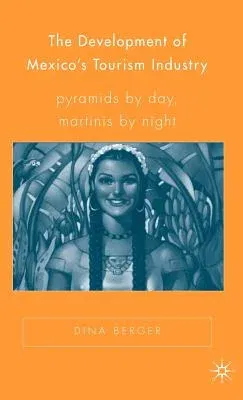D Berger
(Author)The Development of Mexico's Tourism Industry: Pyramids by Day, Martinis by Night (2006)Hardcover - 2006, 11 April 2006

Qty
1
Turbo
Ships in 2 - 3 days
In Stock
Free Delivery
Cash on Delivery
15 Days
Free Returns
Secure Checkout

Part of Series
New Directions in Latino American Cultures
Print Length
184 pages
Language
English
Publisher
Palgrave MacMillan
Date Published
11 Apr 2006
ISBN-10
1403966354
ISBN-13
9781403966353
Description
Product Details
Author:
Book Edition:
2006
Book Format:
Hardcover
Country of Origin:
US
Date Published:
11 April 2006
Dimensions:
21.29 x
15.29 x
1.65 cm
ISBN-10:
1403966354
ISBN-13:
9781403966353
Language:
English
Location:
New York
Pages:
184
Publisher:
Weight:
326.59 gm